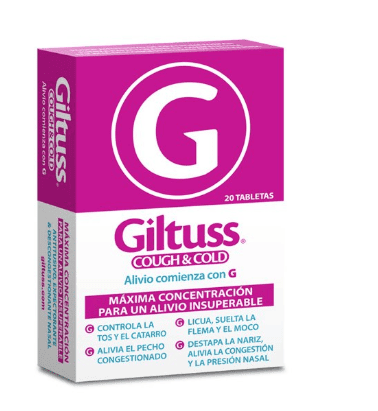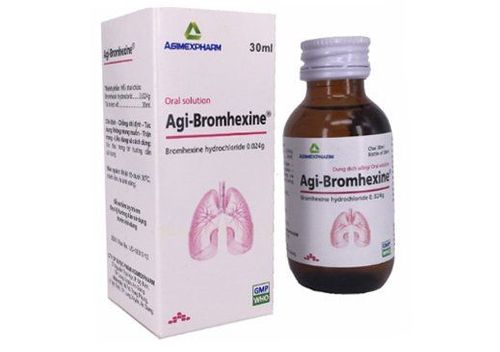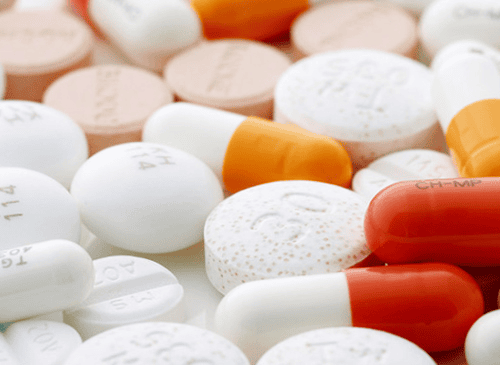This is an automatically translated article.
The drug Diaphyllin Venosum works on the respiratory tract, and is indicated in the cases of patients with asthma and bronchitis, paroxysmal shortness of breath, chest pain occurring with exertion...So to find out more What is the use of Diaphyllin venosum? Let's find out the necessary information about the drug Diaphyllin Venosum through the article below.
1. What is the use of Diaphyllin venosum?
Diaphyllin venosum is a drug manufactured by Gedeon Richter Plc. Its main ingredient is theophylline ethylenediamine. The drug is used in the treatment of cardiac and bronchial asthma, bronchospasm, chronic bronchitis, decompensated heart failure and paroxysmal nocturnal dyspnoea, angina on exertion , atropine-resistant atrioventricular block develops on the basis of ischemia, it halts the action of dipyridamol, edema, atherosclerotic cerebral circulatory disorders, hypertensive microcirculation disorders, intermittent claudication.
Diaphyllin Venosum containing the active ingredient theophylline is a medicine made in the form of an injectable solution, packed according to specifications, each tube contains 5 ml, 1 box has 5 ampoules. The drug is mixed infusion or used with an electric syringe to allow the slowest rate of drug delivery.
Aminophylline is a complex of theophylline and ethylenediamine. Main action at the cellular level: Theophylline is a drug that will reduce intracellular calcium ions, it also blocks adenosine receptors.
The half-life is prolonged in patients with pulmonary edema, cardiopulmonary disease, liver disease, hypothyroidism, and infections, as well as in the third trimester of pregnancy. Hyperthyroidism and fever shorten the half-life of theophylline.
Treatment of atropine-resistant atrioventricular block that develops on an ischemic basis, suspends the action of dipyridamol, edema, atherosclerotic cerebral circulatory disorders, high-grade microcirculation disorders blood pressure, claudication.
2. Usage of the drug Diaphyllin venosum
2.1. Diaphyllin venosum administration: Diaphyllin venosum is generally eliminated slowly in patients with heart failure, hypoxia in blood and liver, pneumonia, viral infections (especially influenza viruses) and in the elderly. Drugs taken at the same time may increase or decrease theophylline clearance
Must consider, whether there is previous treatment with aminophylin or theophylline (especially long-acting preparations).
Use when: Administer intravenously slowly (over at least 5 minutes) to the patient in the supine position. The patient must lie down for a while after the injection under the supervision of a qualified person.
Dilute the contents of the syringe in 250-500 ml of physiological saline or 5% glucose solution to obtain intravenous drip.
Do not mix the medicine with any other medicine solution. This injectable diaphyllin venosum is to be given by injection or intravenous infusion only.
Sudden increases in serum theophylline concentrations may cause adverse reactions, so plasma concentrations should be monitored.
2.2. Dosage of Diaphyllin venosum: In the emergency : Intravenous slow (over at least 5 minutes) 240 mg aminophylin (1 ampoule) once or twice daily. If plasma theophylline concentration is less than 3 mcg/mL, a bolus of 5-7 mg/kg should be administered intravenously until a plasma concentration of 10 mcg/mL is reached, followed by intravenous drip. (If plasma theophylline concentration is higher than 3 mcg/ml, a dose of 1 mg/kg body weight will increase plasma concentration by 2 mcg/ml). Dosage: If the patient is not currently taking aminophylin or theophylline, use a dose of 5.7 mg/kg, slowly intravenously, at a rate not to exceed 25 mg/min. Maintenance therapy with drip:
If theophylline clearance is normal: 0.5 mg/kg/hour Children 6 months to 9 years: 1 mg/kg/hour Children 10-16 years or Young smokers: 0.8 mg/kg/hour Elderly patients: 0.3 mg/kg/hour If clearance is reduced (eg in patients with heart or liver/kidney failure): 0.3 mg/kg/hour. Use in patients currently taking forms of theophylline For patients currently taking forms of aminophylline, the time, route, and dose of the patient's last dose to determine and review loading dose. A loading dose based on an expected 0.5 mg/kg (body weight) of theophylline would result in a 1 mcg/mL increase in serum theophylline concentration. Therefore, for patients receiving forms of aminophylline, loading doses should be delayed until serum theophylline concentrations can be achieved or clinicians should carefully select doses based on benefits and risks. potential risks.
Then, the intravenous maintenance dose of aminophylline as described above may be considered.
What to do in case of overdose? In the event of an emergency, call 911 immediately or go to the nearest local health station.
What to do when you miss a dose? If you forget a dose, take it as soon as possible. However, if it is almost time for your next dose, skip the missed dose and take your next dose at the scheduled time. Note that double the prescribed dose should not be taken.
3. Contraindications of the drug Diaphyllin venosum
Diaphyllin venosum is contraindicated in the following cases:
Recent myocardial infarction, arrhythmia, ulcerative disease,... Hypersensitivity to the components of the drug. Care should be taken when combining the drug Diaphyllin venosum with: Other aminophylline or purine derivatives (may cause unwanted reactions) such as: Antihypertensive drugs, other xanthine drugs (concurrent use can have may increase drug toxicity). Drugs that block H2 receptors increase the concentration of the drug in the blood plasma. Diaphyllin venosum may stop the effects of diazepam. Diaphyllin venosum is chemically incompatible with the following compounds: Cephalothin, chlorpromazine, codeine, corticotropin, dimenhydrinate, doxapram, dihydralazine, tetracycline given within one hour, pethidine, phenytoin, prochlorperazine esilate, promazine hydrochloride, vancomycin hydrochloride, vancomycin hydrochloride, Precautions for use:
The therapeutic concentration of diaphyllin venosum in plasma is 5 - 20 mg/ml. Because of its direct cardiac and nerve stimulant effects, Diaphyllin can only be administered intravenously, but must be administered very slowly.
In case of oliguria, the dose should be reduced. During the period of taking the drug, the duration of sleep may be reduced. If injected outside a vein or injected into an artery, the drug can cause serious damage, even necrosis. In the case of chronic atrial fibrillation, the use of the drug must be monitored carefully because of the risk of thromboembolism. In the case of people with unstable blood pressure, Diaphyllin should be used as a slow infusion, but blood pressure must be controlled.
4. Note when using the drug Diaphyllin venosum
Coronary artery spasm , unstable angina (angina pectoris that increases with physical activity);
Hypertrophic obstructive cardiomyopathy (HOCM, a cardiomyopathy in which the heart muscle becomes abnormally thick); Frequent tachycardia, severe hypertension, hyperthyroidism, gastric or duodenal ulceration, progressive liver or kidney disease, dyschromia, abdominal pain, mental confusion, hypersensitivity with light, epilepsy.
The dose of diaphyllin venosum needs to be adjusted according to each case or the following comorbidities:
Age: neonates, young children and the elderly (over 60 years old); Comorbidities such as: congestive heart failure, hyperthyroidism, liver disease (cirrhosis, acute hepatitis), kidney failure, septic shock; pulmonary edema; Cardiopulmonary disease, high fever, recently quit smoking, obese, eating a high protein diet, using caffeine and drinking alcohol.
Driving and operating machinery:
Before taking the drug, ask your doctor for guidance when participating in traffic or other risky activities.
Use in pregnancy and lactation:
Pregnancy: As with any other drug, use during pregnancy only when the benefits outweigh the risks.
Lactation period: The active ingredient of the drug is secreted into breast milk. Therefore, this drug should only be used after breast-feeding has been completed and the nursing infant should be closely monitored. Consult your doctor or pharmacist before taking any medicine.
5. Side effects of the drug Diaphyllin venosum
Undesirable effects similar to caffeine occurring at therapeutic concentrations are usually mild and transient; However, these reactions can occur in up to 50% of treated patients if started with high doses. Undesirable frequency effects may be reduced with continued treatment and less so with low-dose treatment. In a very small number of patients, caffeine-like adverse effects persist for the duration of aminophyline therapy.
Theophylline plasma concentrations above 20 mcg/mL are associated with serious adverse effects such as seizures, a sharp drop in blood pressure, ventricular arrhythmias, and severe gastrointestinal complications.
The following undesirable effects are listed by frequency:
Very common (> 1/10); Common (>l /100 to <1/10); Uncommon (>1/1,000 to <1/100); Rare (>l /10,000 to <1/1,000); Very rare (<1/10,000),
Immune system disorders: Rare: allergic reactions
Nutritional and metabolic disorders : Common: hyperkalemia, hypercalcemia, hypokalemia, hyperuricemia blood, increased serum creatinine, uncommon: hyponatremia, hypophosphataemia
Psychiatric disorders: Common: excitability, restlessness, insomnia
Rare: psychosis, memory impairment, increased activity (in children), depression
Nervous system disorders : Common: extremities tremor, headache
Heart disorder 1; Common: ventricular arrhythmias
Rare: tachyarrhythmias, tachycardia, palpitations
Vascular disorders: Common: hypotension
Rare: sudden hypotension (serum levels above 25 mcg/ ml)
Gastrointestinal disorders: nausea, vomiting, diarrhea, worsening of the existing esophageal reflux disease
Rare: severe gastrointestinal complications (eg, bleeding – serum levels above 25 mcg /ml)
Skin and subcutaneous tissue disorders : Uncommon: urticaria, exanthema, peeling, erythema, pruritus
Musculoskeletal and connective tissue disorders : Rare: seizures/spasms (blood concentration) bar above 25mcg/nnl)
Renal and urinary disorders : Rare: increased diuresis.
Inform the doctor about the unwanted effects encountered when the patient uses the drug.
6. How to store Diaphyllin venosum
Carefully read the information on storage and expiry date of the medicine listed on the product packaging and the drug instruction leaflet.
Usually medicines are stored at room temperature, away from moisture and light. Store diaphyllin venosum in a dry place, the temperature is below 30°C
When the medicine is expired or cannot be used, consult your doctor, pharmacist or garbage disposal for the correct and safe way to dispose of the medicine. whole. Medicines should not be thrown down the toilet or plumbing unless asked to do so.
Note: Do not keep Diaphyllin Venosum out of the reach of children and away from pets.
Please dial HOTLINE for more information or register for an appointment HERE. Download MyVinmec app to make appointments faster and to manage your bookings easily.













